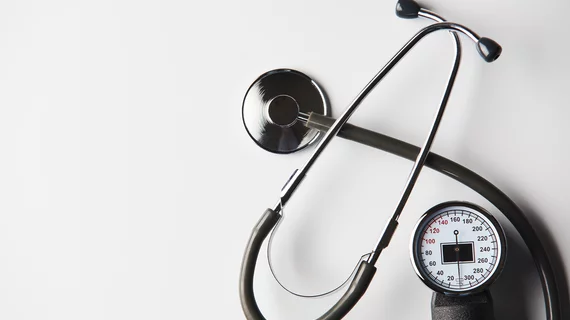American women have better control of their hypertension than men
An analysis of sex-related differences in cardiovascular risk factors, treatment and control in the U.S. has revealed women have a better handle on their high blood pressure than men, but they also fare worse in terms of cholesterol and obesity.
“By assessing sex differences across major cardiovascular risk factors, this research offers crucial insight for individuals and clinicians aiming to better manage these risks,” lead researcher Sanne A.E. Peters, PhD, said in a release. Peters’ team’s findings were published in Circulation Feb. 19.
Peters et al. extracted 2001-2016 data from the National Health and Nutrition Examination Survey and assessed sex differences in temporal trends in systolic blood pressure, body mass index, smoking status, high-density lipoprotein, total cholesterol and hemoglobin A1c. They also considered trends in the treatment and control rates of hypertension, diabetes and dyslipidemia.
The researchers found that obesity rates increased across the board, but the most prominent hike was in women. While BMI increased from an average of 28.1 to 29.6 for women during the study period, it increased from 27.9 to 29 for men. Obesity was 5 percent more common in women in 2016, even though 11 percent more men than women were overweight that year.
Cholesterol levels decreased by 44 percent more in men than in women over the study period—by 13 mg/dL for men and 9 mg/dL for women. That in part contributed to a rise in the rate of diabetes, which increased by 3 percent for both sexes during the study period.
“The good news is that, since the millennium, there have been reductions in blood pressure and cholesterol levels and in rates of smoking across adults in the United States,” Peters said. “However, these rates leave much room for improvement, and the average BMI has gone up, with the greatest rise for women.”
The authors reported the number of people with high blood pressure dropped during the 15-year span, from 43 percent of women to 42 percent and from 51 percent of men to 49 percent, using the recently adjusted cutoff of 130/80 mm Hg. Still, just 30 percent of women and 22 percent of men had “adequate” control of their hypertension in 2016.
“We also saw a welcome increase in the number of people who were managing their diabetes and high blood pressure,” Peters said. “But the vast majority—around two-thirds of women and 80 percent of men—still don’t have these conditions under control, and that’s incredibly concerning.”
In line with other recent reports, the team found that smoking rates dropped during the study period, from 22 percent to 18 percent in women and from 29 percent to 22 percent in men.

